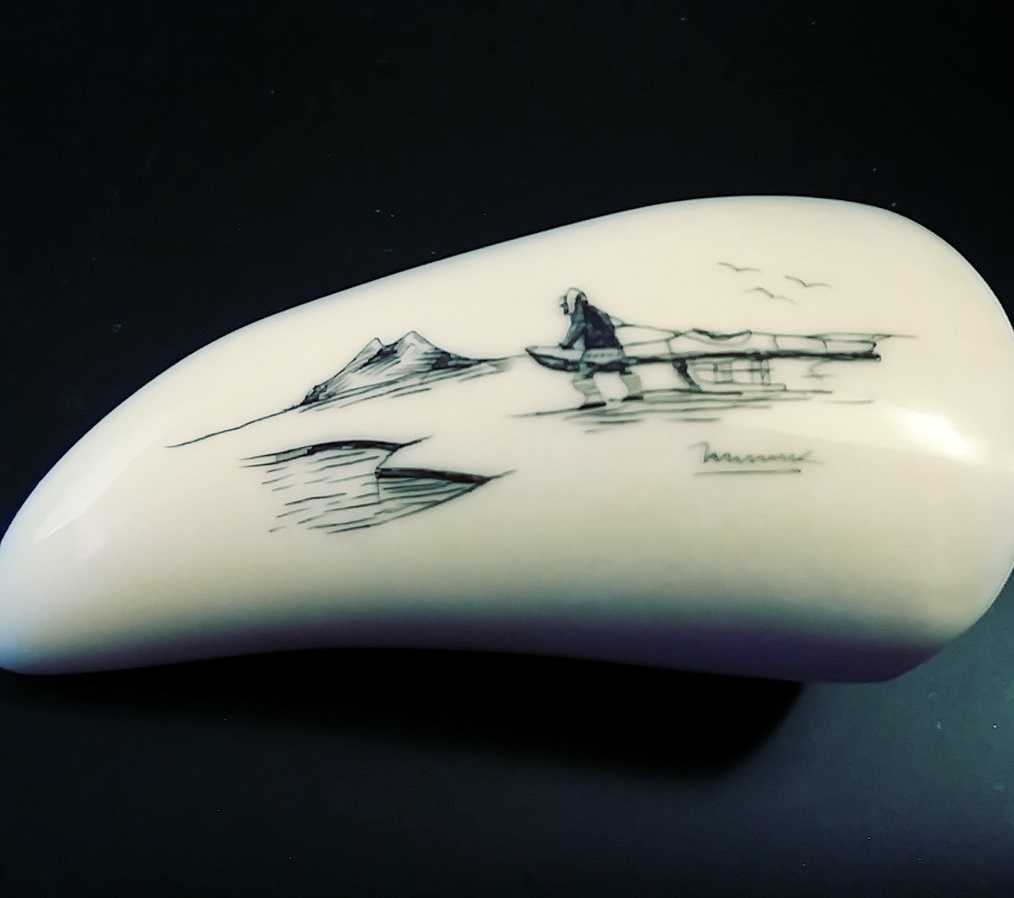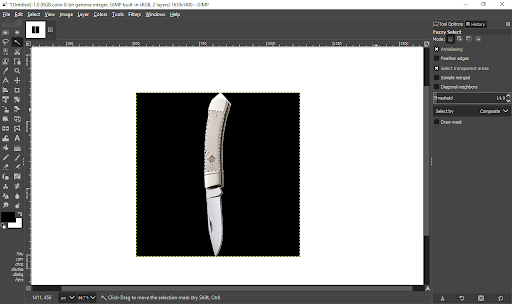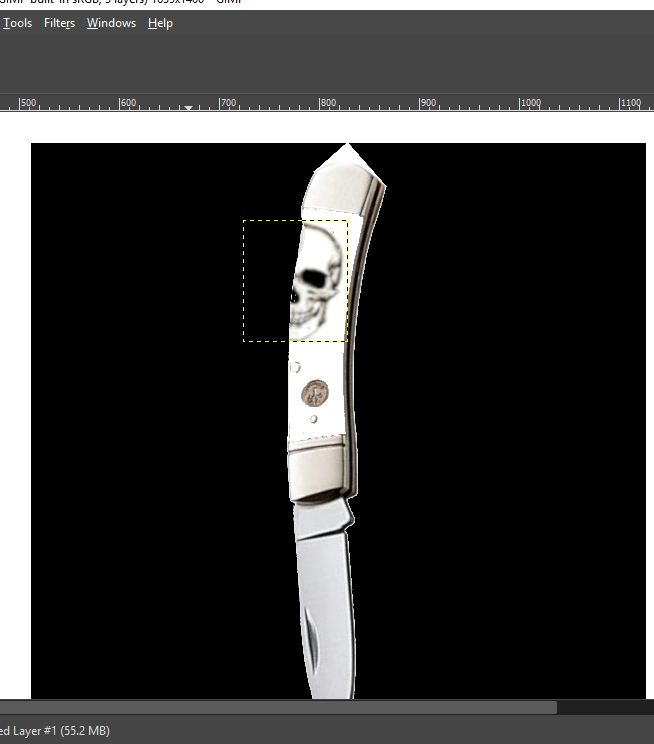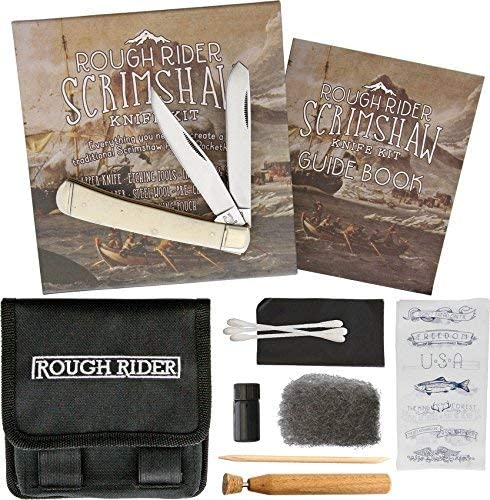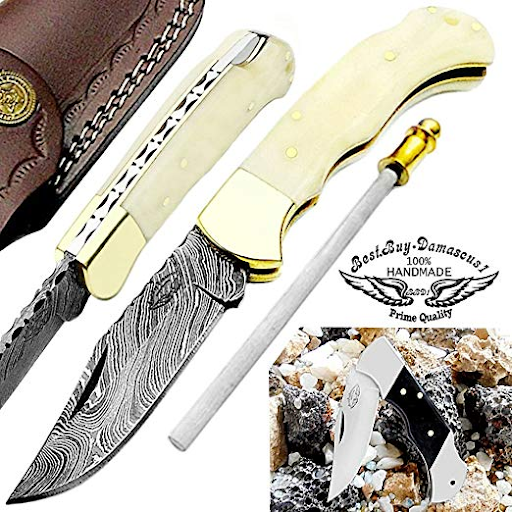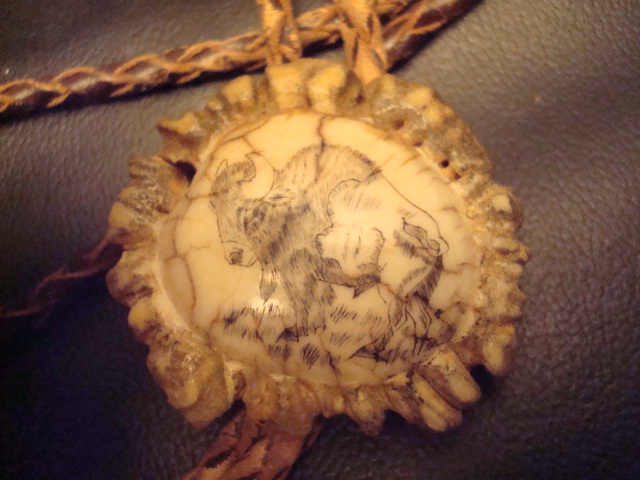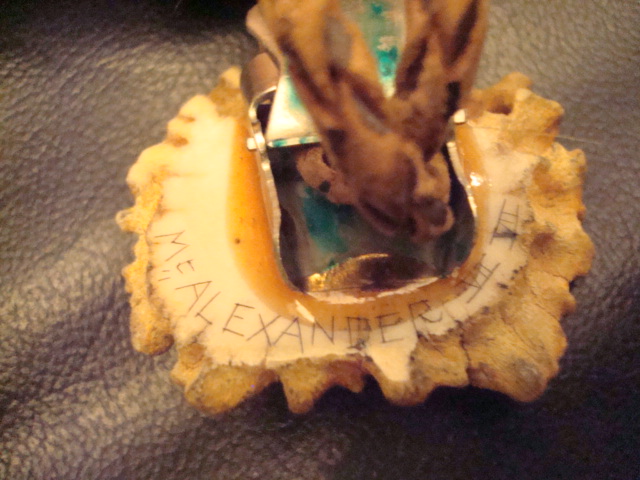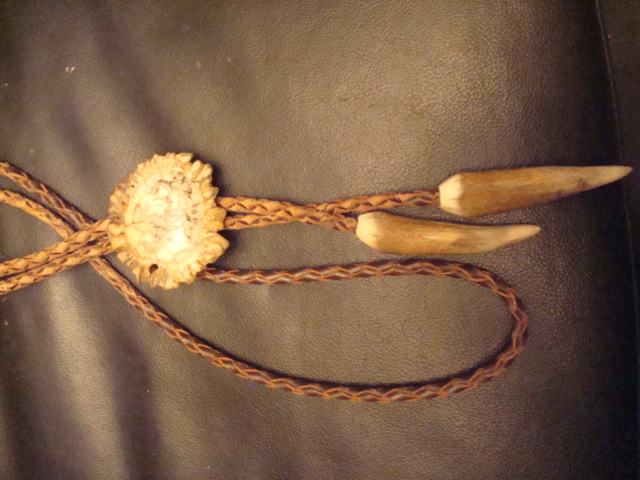
Barlow is a name many people recognize in scrimshaw. Just about everything I’ve ever seen on finished goods such as knives, belt buckles, lighters, jewelry, etc. This one is scrimmed on what appears to be a whale tooth, and was inherited recently.

An amazing amount of seagulls circle the ship, more than the typical 2-5 on most scrimshaws. The front is extremely polished while the back is dull and unpolished. We’re waiting for a picture of the signature which will hopefully be provided soon. The owner writes:

“I have this piece that is scrimshawed and is absolutely beautiful. I don’t know if it’s a whale tooth or walrus. It’s signed by Steve Barlow. I have attached a couple of pictures and hope that maybe you can guide me to finding someone that can tell me if it’s a real original or a Knock-off. I received it from as an inheritance and have no clue. …”

The signature appears as “Steve T Barlow”…
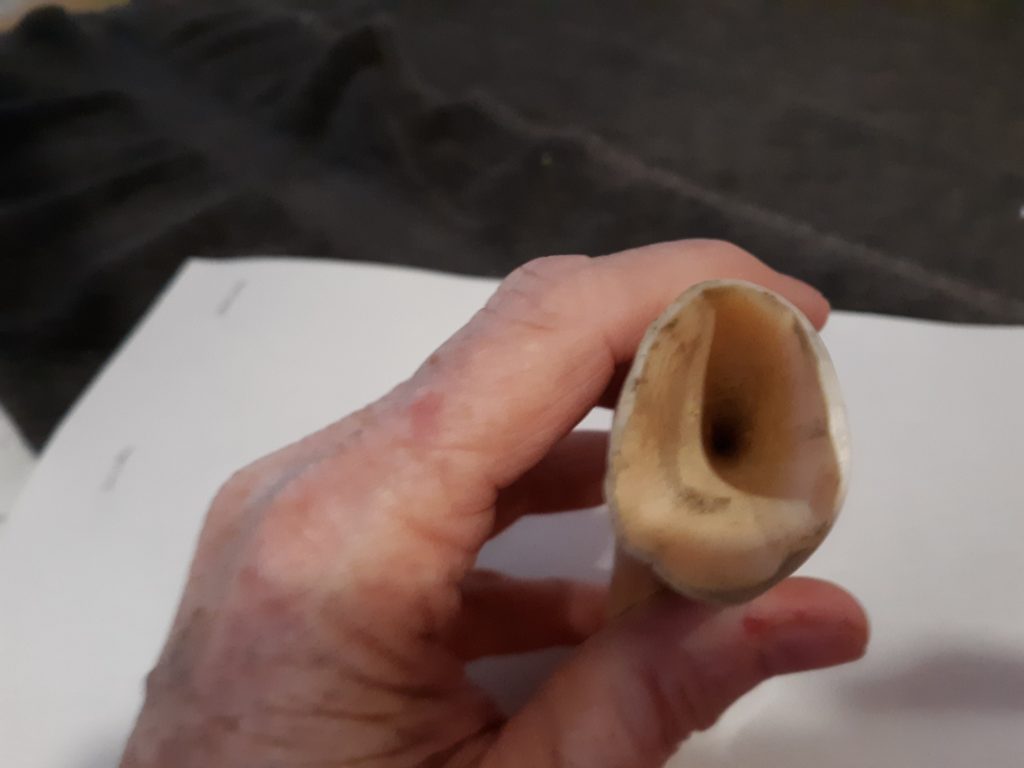
Base of tooth appears to the right. While there is a nerve cavity, the sides appear quite thick…
If you have any knowledge of the piece, please leave your comments below.
